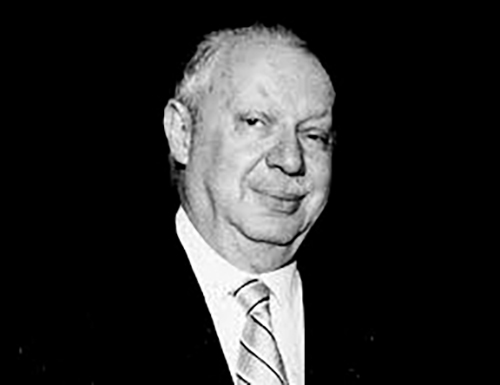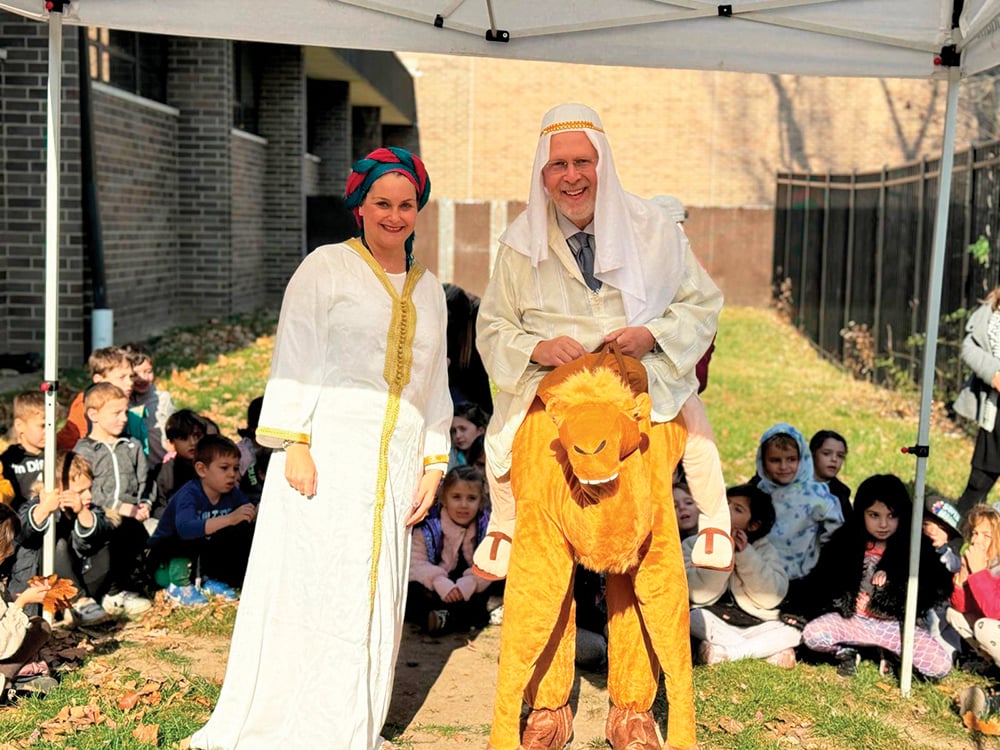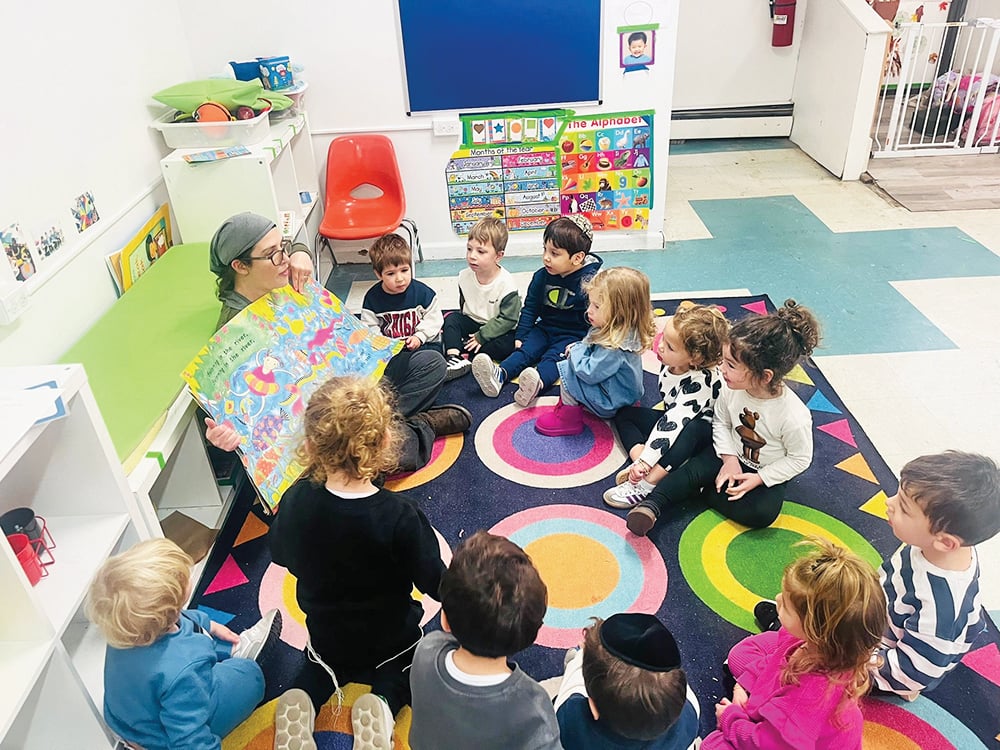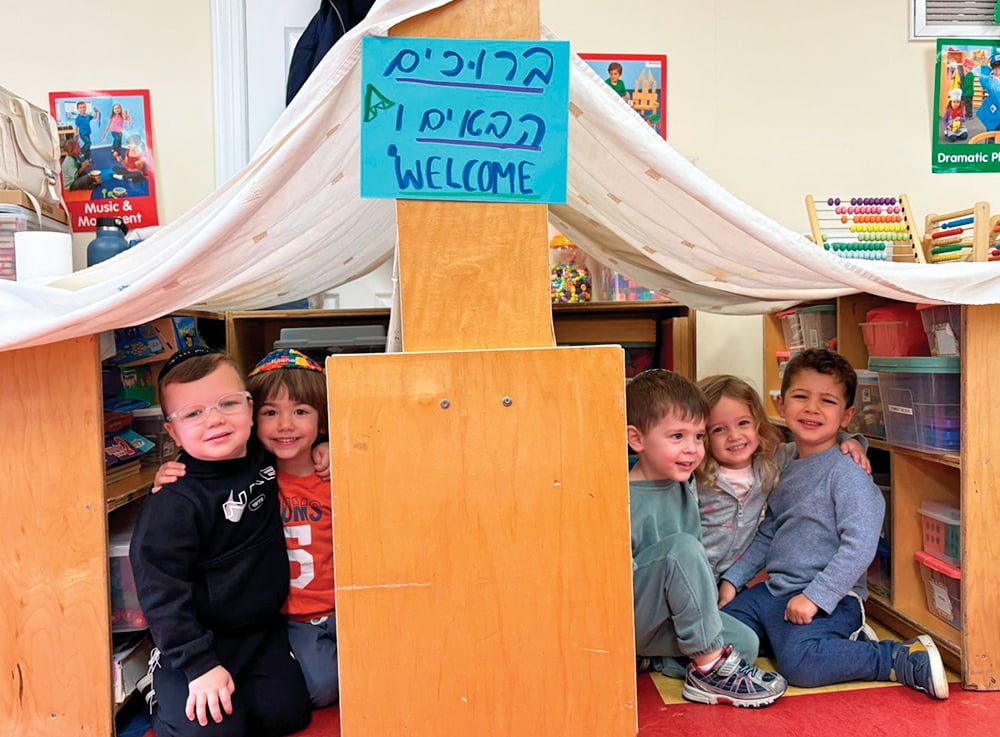
Part V
Unprecedented Access to Visas
In July 1946, Irving Bunim, Stephen Klein and Rabbi Joseph Baumel of the Mizrachi met with Dean Acheson, then undersecretary of state (1945-1947), to obtain 4(d) visas for those from Shanghai. As historian Jonathan Helfand pointed out, after the meeting with Acheson, the State Department “borrowed help from the [American] Consuls” to start processing 250 men, women and children.
In November 1946, Bunim announced that the Vaad had paid part of their transportation to the U.S., and that they were still the Vaad’s responsibility. Then 300 additional visas became available, and Acheson promised he would use the 4(d) visas for the rabbis and yeshiva students in Europe just as he had for the rabbis in Shanghai.
Meeting With Dean Acheson
After the meeting with Acheson, Helfand quoted Bunim, who proclaimed he “became our best friend.” The reason was clear:
“Instructions went out to all Consuls to process the rabbis and yeshiva students. They have made concessions that are unknown and unheard of in the entire history of the U.S. They allow us entirely to certify that a man is a rabbi or student, and they take our word for it without their own investigation. Furthermore, we investigate the synagogues, and if we say a synagogue is reliable and financially responsible, they ask no questions. They have given us a man here in New York, with instructions from Acheson, to proceed with this work. When he came to the Crown Heights yeshiva (where Baumel was the principal) and saw all the work being done there, he put them down for three extra rabbis. When Torah Umesorah gave them a program and asked for 30 rabbis, he said they could use 50. They rushed down to us asking whether they should assume responsibility for 50 rabbis.”
Before this meeting, Helfand added, it took a year-and-a-half for rabbis to obtain a visa. It took between four to six months before they could see a Consul. Rabbis had to prove they had semicha (rabbinic ordination), which then had to be approved by the State Department. Then the synagogues offering them employment had to be investigated, But by working with the Vaad, the rabbis did not have to go through this process. When the cases went to Washington, they cabled the Consul who called the rabbis to come and pick up their visas. Dr. Isaac Lewin opened two consulates, one in Vienna and the other in Prague. His attempts to open consulates in Lodz and Warsaw, however, failed.
When the Vaad completed its paperwork on a case, it was turned over to Acheson’s representative in New York, according to Helfand. Once he approved it, the Vaad received a letter from the State Department. If a student was married, his wife received a visa to allow her to accompany him to the U.S. When the State Department asked if they should send letters or cables to the Consuls, the Vaad asked that cables be sent at Vaad expense to expedite the procedure. When the Vaad requested a visa for a woman teacher, the State Department wondered how a woman could be a rabbi. After the Vaad explained the importance of women teachers in Jewish education and in Jewish life, the State Department issued the permits.
As of late October 1946, 148 visas were approved, Helfand said: 30 had been received, 200 were still pending in the Visa Division in Washington, bringing the total to 378 cases. By early November, the number was closer to 500. All the visas Bunim mentioned were non-quota visas. “They did not take … any space reserved for another Jew. They come in over and above the quota.”
While the procedure to expedite visas initiated by Acheson worked in the U.S,, unfortunately the American Consuls in Europe continued to follow the frustrating and time-consuming procedures to discourage Rabbi Baruch and others. Yet through the 4(d) program, 49 rabbis immigrated to the U.S, by late 1947 and worked as pulpit rabbis and teachers around the country. Several hundred students were permitted to enter the U.S. for an extended period and continued their studies and yeshivas provided for their welfare. When the Vaad reported that it had brought 1,100 families to the U.S. in 1947 through the non-quota program, in reality it had brought in between 3,500 and 4,500 Jews. In one case, a man from Hungary received a visa that covered himself, his wife and their 11 children. All these cases were outside the regular immigration quota. Without the Vaad’s efforts, these people would not have been permitted to enter the U.S., since they were from countries whose quotas had been exhausted for the next eight to ten years.
New Visa Arrangements
In early February 1948, Stephen Klein informed Rabbi Baruch that new arrangements were made with the State Department to allow the Vaad to bring rabbis to any American Jewish institution. He wrote: “Very strong interventions are going to the various Consuls that visas should be given to these men which we designate. It will be necessary to move as many people as possible to Paris, because the Paris Consul is working very satisfactorily.”
Bunim credited this new arrangement to a meeting he, Klein and Rabbi Aharon Kotler had with Undersecretary of State Robert A. Lovett, where they received new concessions about non-quota immigration.
Klein began sending lists of individuals and copies of their contracts to Paris to prove that these Jews had no intention of staying in Paris. Klein also gave the names of displaced persons being blocked by the Consul in Stuttgart, Germany to Herve J. L’Heureux, the State Department visa division chief. L’Heureux promised to send a very strong letter to Stuttgart asking why these cases had not been expedited and why so many obstacles had been placed in their path.
Several months later, Klein asked Rabbi Baruch to alert the Vaad when individuals were issued their visas towards the Vaad’s corporate affidavit quota. Historian Zosa Szajkowski explained that in 1939, the National Refugee Service (NRS), the largest refugee assistance service in the U.S.—and the United Service for New Americans (USNA) that it replaced—was authorized to provide corporate affidavits for potential immigrants. “These affidavits committed the agency to assume full responsibility for a designated number of immigrants, otherwise eligible but unable to furnish acceptable affidavits from individuals, with the provision that the agency would not permit them to become public charges.”
Once the Vaad learned that a visa had been issued, they could alert relatives of the impending arrival and keep track of the immigrants for the Department of Justice. The DOJ required an initial report of each person entering the country and biannual reports, until there was proof of self-sufficiency. These reports enabled the Immigration and Naturalization Service (INS) to determine whether follow-up was necessary. Between October 30, 1948 and July 21, 1952, more than 400,000 immigrants came to the U.S. under the Displaced Persons Act. Sixteen percent were Jews. An INS report later concluded that without the assistance from the Vaad and other relief agencies, this would not have been accomplished.
Dr. Alex Grobman is the senior resident scholar at the John C. Danforth Society, a member of the Council of Scholars for Peace in the Middle East and on the advisory board of the National Christian Leadership Conference of Israel (NCLCI). He has an MA and PhD in contemporary Jewish history from The Hebrew University in Jerusalem.












